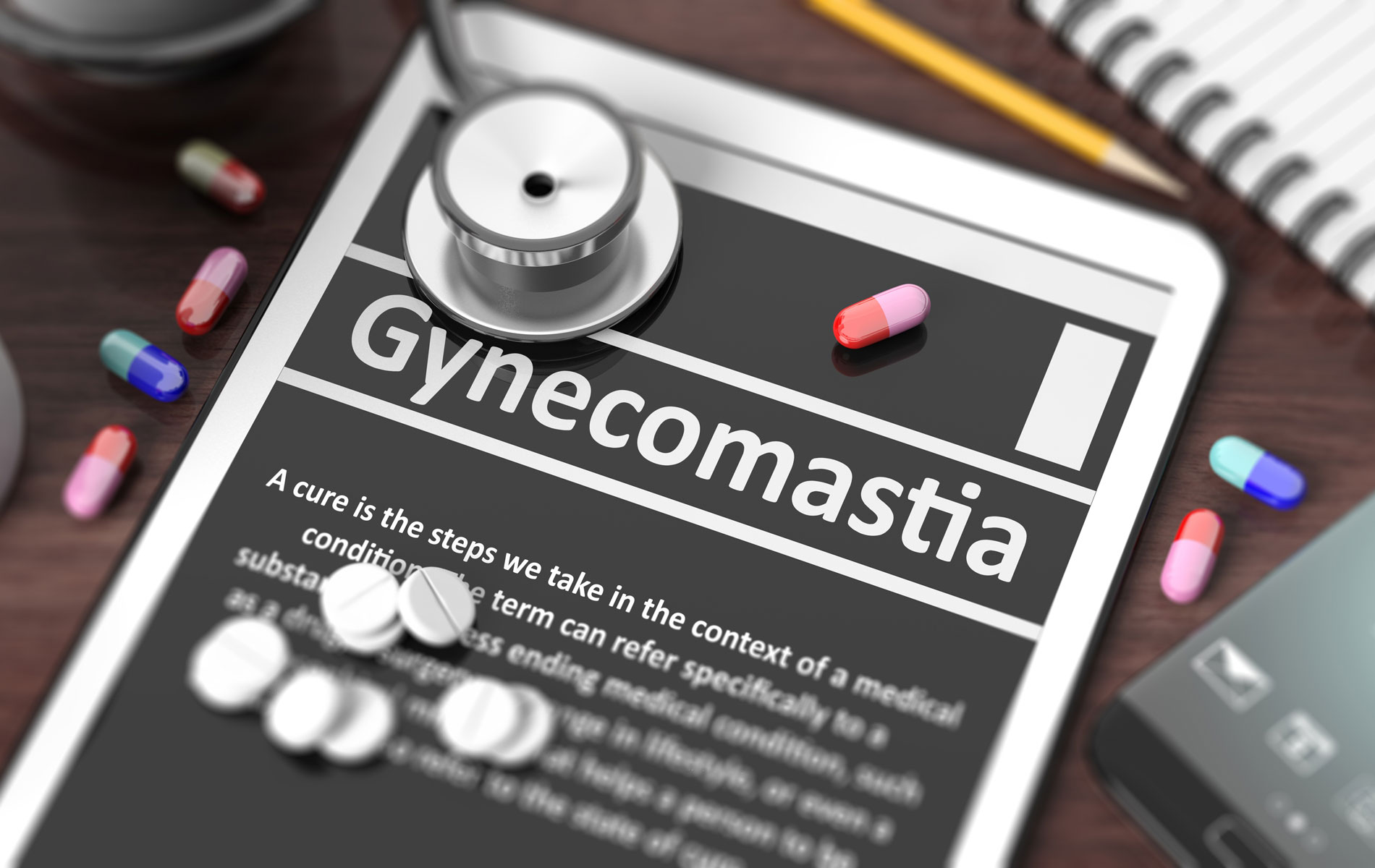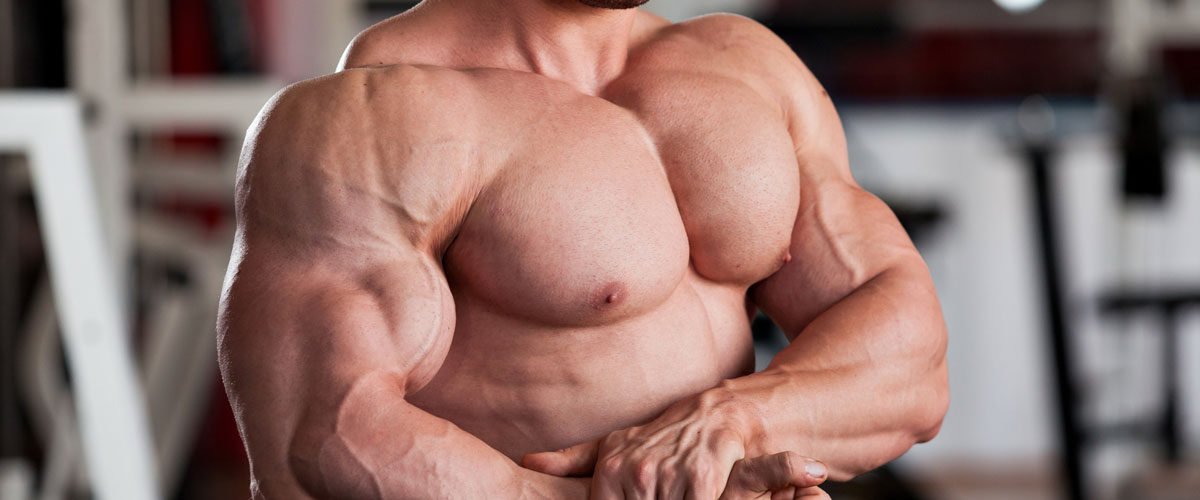Gynecomastia: defined
Our look can very much affect the way we feel about ourselves and therefore our self-esteem and consequently our self worth. Sometimes when we have a condition that makes us look different to what’s considered the societal norm, it can not only be physically discomforting, but also the cause of mental anguish.
Gynecomastia (or as it is sometimes called “man boobs”) is the enlargement of men’s breasts. It affects males of varying ages, mainly newborns, adolescent boys and older men. There are varying causes but the most common is hormonal imbalance.
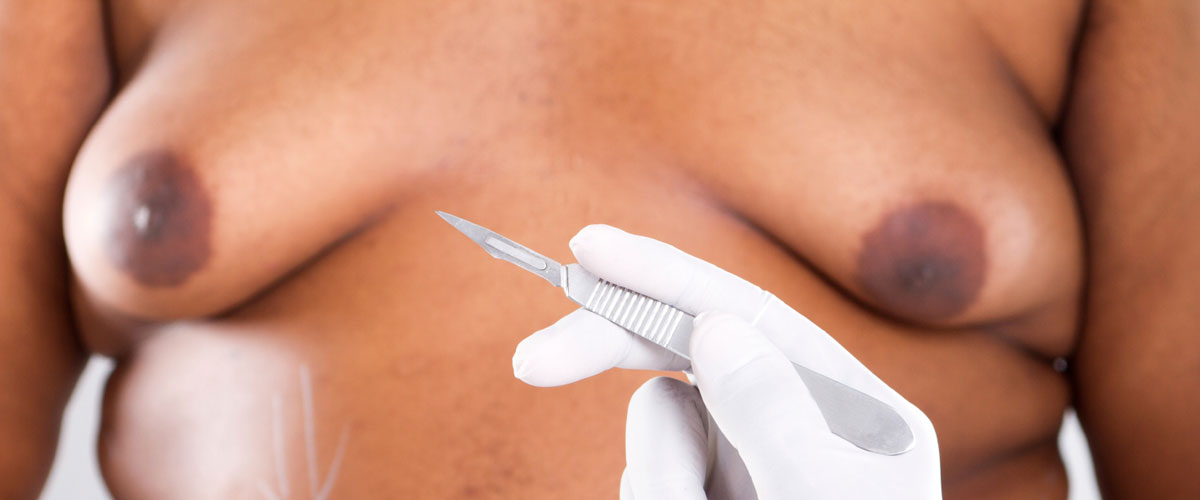
Gynecomastia in newborns
 Some newborn boys carry excess estrogen from their mothers. It is a hormonal imbalance that can occur and show up soon after the birth of a child. In most cases, these imbalances tend to disappear within the first six to 12 months of a baby’s life. If the symptoms last longer, it is most important to consult your doctor.
Some newborn boys carry excess estrogen from their mothers. It is a hormonal imbalance that can occur and show up soon after the birth of a child. In most cases, these imbalances tend to disappear within the first six to 12 months of a baby’s life. If the symptoms last longer, it is most important to consult your doctor.
Gynecomastia in teens
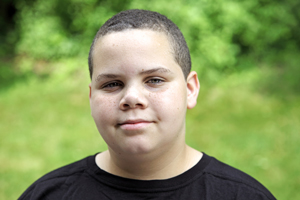 Teen and pre-teen boys go through standard hormonal imbalances while coming of age. Those imbalances lead to many difficult challenges, one of which can be dealing with temporary gynecomastia.
Teen and pre-teen boys go through standard hormonal imbalances while coming of age. Those imbalances lead to many difficult challenges, one of which can be dealing with temporary gynecomastia.
Gynecomastia in that age group can be caused either from an estrogen secreting tumor or just from the hormonal changes occurring in the boy’s bodies at that time. It can take anywhere up to two years for the extra tissue to disappear. If the symptoms persist longer than that, then other options for treating it could be explored.
Gynecomastia in older men
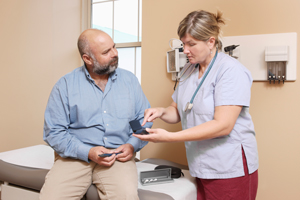 There are numerous causes for Gynecomastia in older men (65+). There are some drugs that can cause the condition when taken. Those include estrogen or estrogen filled foods, any hormonal therapy like gonadotropin or clomiphene as well as testosterone inhibiting drugs like Flagyl (metronidazole), heroin, marijuana or methadone, anti-depressants and some chemotherapy drugs.
There are numerous causes for Gynecomastia in older men (65+). There are some drugs that can cause the condition when taken. Those include estrogen or estrogen filled foods, any hormonal therapy like gonadotropin or clomiphene as well as testosterone inhibiting drugs like Flagyl (metronidazole), heroin, marijuana or methadone, anti-depressants and some chemotherapy drugs.
Conditions leading to gynecomastia in older men also include liver or thyroid disease, and certain types of cancer (lung, pituitary gland, adrenal gland and often from prostate cancer).
Gynecomastia Surgery
In some cases, gynecomastia has a shelf life and can go away on its own. Particularly in the cases of pubescent males who are going through standard hormonal imbalances affecting their age group. Once the hormones even out—something that can usually takes 6 to 12 months—the symptoms of gynecomastia can disappear on their own, providing a great sense of relief for the patient. In some cases however, the cause of gynecomastia remains unknown and it does not naturally resolve itself. As a result, surgery can be a good option to alleviate the difficulty of living with this condition.
Surgery is not a decision to be taken lightly. But if you have consulted your doctor and tried all other options available, then it can bring a great sense of relief while ridding you of the physical and psychological discomfort that comes with gynecomastia.
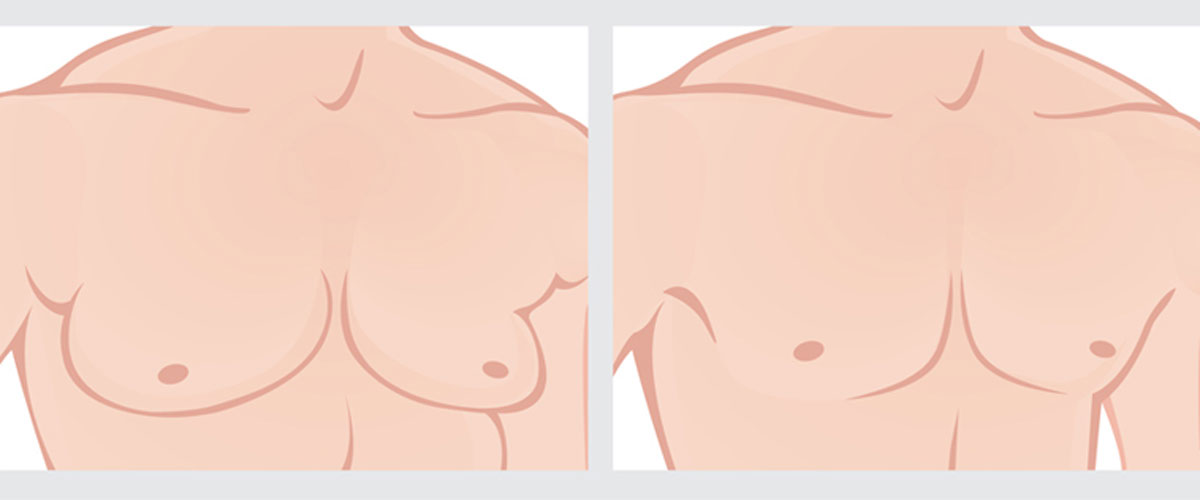
Surgery consists of the removal of tissue from the breast area and in most cases requires a general anesthetic (although in some cases it can be performed with a local anesthetic and some form of sedation).
There are two types of tissue that exist in men’s breast, the fatty tissue and the more firm tissue. If the gynecomastia a result of just the fatty tissue, then often a liposuction can be performed to realign the size of the breasts.
If the gynecomastia requires removal of the more firm tissue in the breast then the tissue will not be able to sucked out and will need to be cut out with a traditional scalpel.
Sometimes patients will need both liposuction and a traditional removal of tissue to obtain their desired result. It’s best to ask your doctor which option will work best for you.
Gynecomastia: What does it feel like?
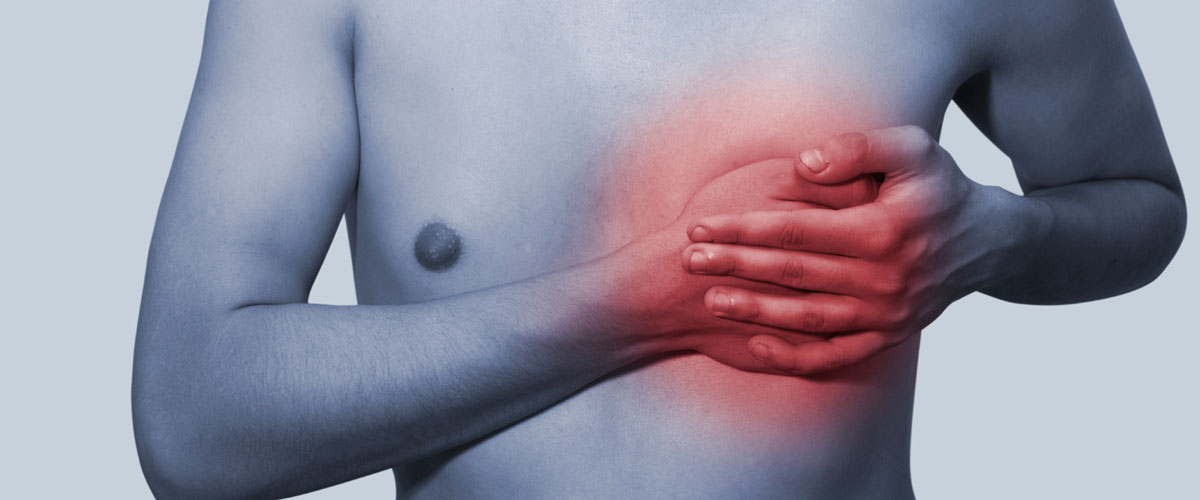
The main physical symptom of gynecomastia is extra tissue in the breast area. Some of this can be softer tissue and some of it can be harder. In most cases the area is not painful but can be tender to the touch. Similar to women’s breast when menstruating or pregnant.
Gynecomastia – Treatment without Surgery
Treatment of Gynecomastia varies depending on its cause and the age of the patient.
 In newborns often no treatment is given at all because after a few months the hormonal imbalance may be resolved on its own.
In newborns often no treatment is given at all because after a few months the hormonal imbalance may be resolved on its own.
Similarly for adolescents, the hormonal cause of gynecomastia can often resolve itself over the course of one to two years and as such no treatment is necessary. Sometimes however for this age group, if the symptoms persist and are unbearably painful or embarrassing, doctors can resort to treatment that does not involve surgery.
Some doctors may prescribe teens with estrogen blocking drugs such as Tamoxifen or Raloxifene. As one might guess, it is believed that blocking estrogen may decrease the size of the breast tissue to resolve the problem.
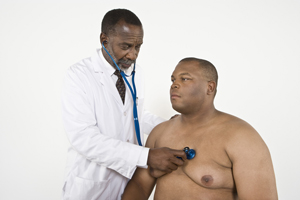 For older men who have the condition as a result of another condition such as cancer or overuse of heroin or marijuana, it will first be attempted to cure the initial condition. If this attempt fails to cure the gynecomastia then drug therapy can be called upon.
For older men who have the condition as a result of another condition such as cancer or overuse of heroin or marijuana, it will first be attempted to cure the initial condition. If this attempt fails to cure the gynecomastia then drug therapy can be called upon.
For cancer related gynecomastia, drugs or radiation therapy can be used as a preventative measure in older men. Sometimes estrogen blocking drugs can be administered along with chemotherapy or radiation therapy can be combined with cancer treatments to prevent the symptoms from appearing.
Gynecomastia Bodybuilding
Some cases of gynecomastia have been reported to be caused by the use of anabolic steroids, which is common among body builders. Sometimes when the body senses too much testosterone, it sends out an internal alarm bell and begins the process of aromatization (converting testosterone into estrogen). In some men, the extra estrogen can incite extra tissue to form in the breast area. If you are a bodybuilder and are concerned that you may have gynecomastia, it’s best to consult your doctor to see if hormone treatment is an option for you.
Gynecomastia Cream as treatment
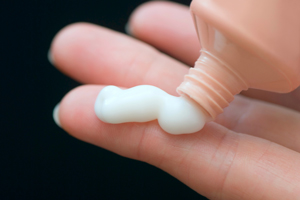 Some creams claim to reduce the size of fat cells and even rid the body of fat cells and those have often been considered as non-invasive options for treating gynecomastia sufferers. It certainly can’t hurt to use a topical cream and if it works it can keep surgery at bay, which can be daunting not to mention painful mentally and physically.
Some creams claim to reduce the size of fat cells and even rid the body of fat cells and those have often been considered as non-invasive options for treating gynecomastia sufferers. It certainly can’t hurt to use a topical cream and if it works it can keep surgery at bay, which can be daunting not to mention painful mentally and physically.
Creams usually claim to have fat-shrinking substances combined with retinol. The retinol acts as a firming ingredient, to keep the skin tight and firm as the fat cells are shrunk and/or discarded via the bodies natural elimination processes.
Some patients have reportedly lost an entire cup size over the course of two months with the use of creams and others have not been as successful. It is most important to consult your doctor before trying this kind of treatment and make sure you have weighed all the risks with the benefits you may find via treatment.
Gynecomastia Pills
 Treating gynecomastia with pills is a polarizing subject. A lot of the pills on the market are simply weight loss pills, which promise the result of a chiseled chest and firm upper body. The problem is that the cause of gynecomastia is not weight gain, so even if a significant amount of weight is lost with the aid of pills, it may not necessarily mean that the extra tissue will disappear from the breast. The tissue in the breasts are typically not fat cells, they are tissue caused to appear from hormonal imbalances. So any treatment applied must take that into account. In effect, make sure you are treating the right problem. Otherwise the symptoms will continue to exist.
Treating gynecomastia with pills is a polarizing subject. A lot of the pills on the market are simply weight loss pills, which promise the result of a chiseled chest and firm upper body. The problem is that the cause of gynecomastia is not weight gain, so even if a significant amount of weight is lost with the aid of pills, it may not necessarily mean that the extra tissue will disappear from the breast. The tissue in the breasts are typically not fat cells, they are tissue caused to appear from hormonal imbalances. So any treatment applied must take that into account. In effect, make sure you are treating the right problem. Otherwise the symptoms will continue to exist.
Gynecomastia: Do diet and exercise help
Diet and exercise are important components to work into all lifestyles. Our body’s need to stay fit and agile and exercise can help prevent many health problems. So whether you are doing it as part of a plan to rid your body of gynecomastia or not, diet and exercise needs to be taken seriously.
It’s important to note that weight gain can be the cause of gynecomastia but it is not the only cause. And if your symptoms are not caused by weight gain, then no amount of diet and exercise will rid you of the problem.

If you are unsure if your symptoms are due to weight gain or hormonal imbalance, it is a good idea to start a weight loss regime and with the right amount of diet and exercise bring yourself to a healthy weight. If you find that you still have symptoms and the man boobs are just not going away, then it might be a good idea to consult your doctor about hormone therapy or possibly surgery.

